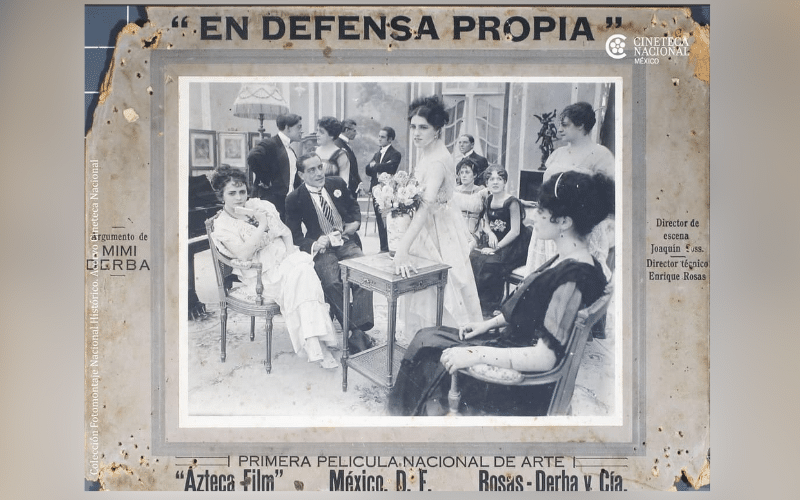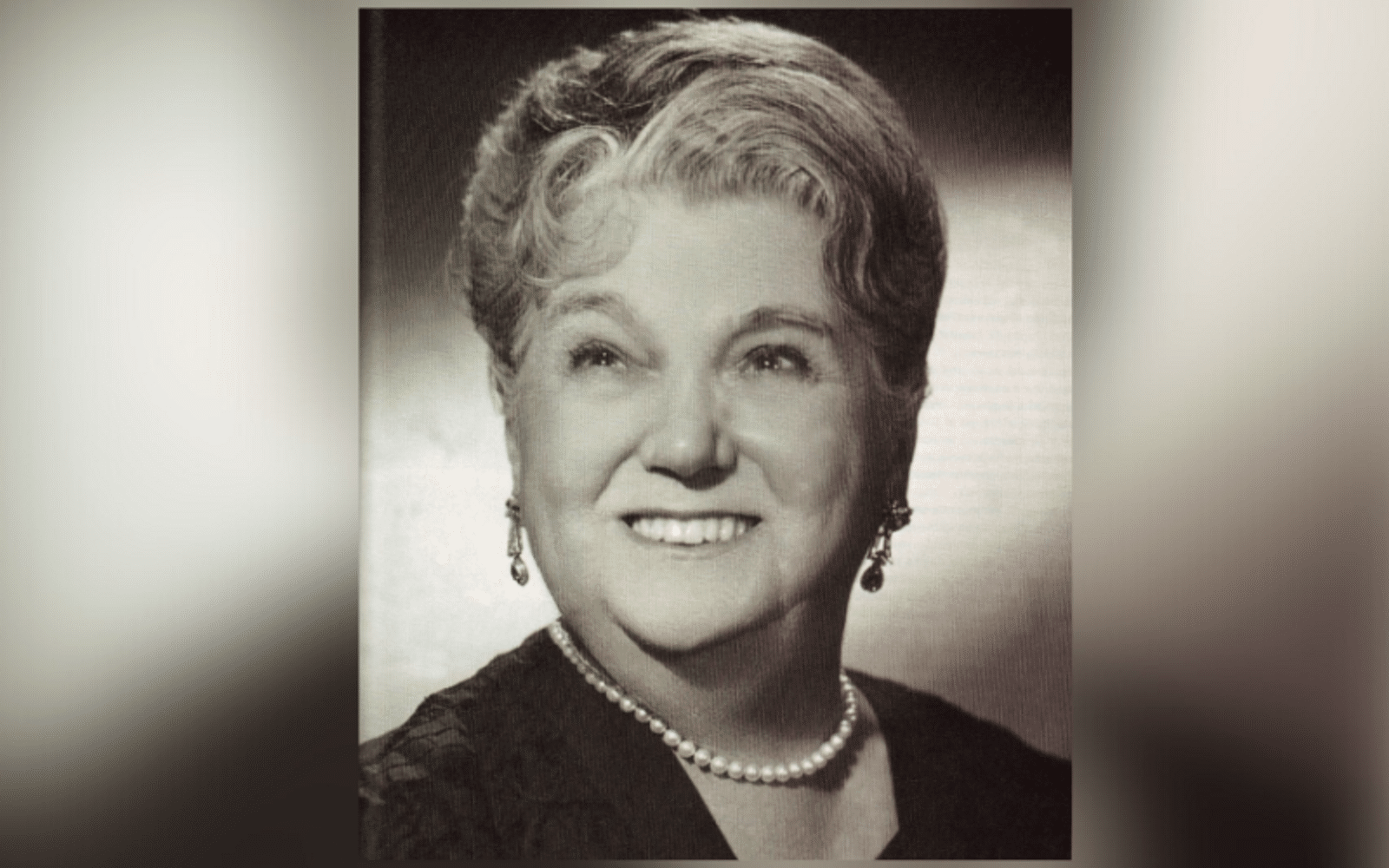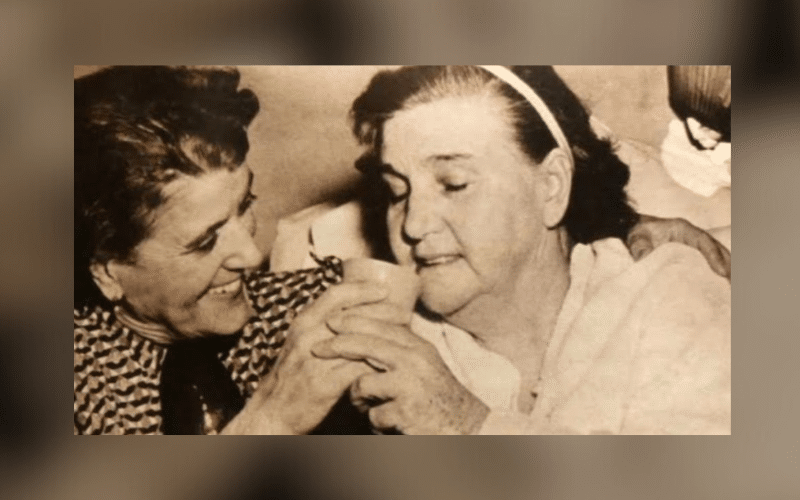Mexican Chocolate Icon la “Abuelita:” Her Story of Authentic Truth
Explore the life of Sara García, hailed as ‘la Abuelita de México’ from her rise to fame in the golden age of cinema to her quiet defiance and personal truths against rigid societal norms.

When it comes to the golden age of Mexican cinema, Sara García Hidalgo, known simply as Sara García, stands out as one of the female figures who paved the way. She’s one of the icons of Mexican cinema, and her influence has spanned generations. García’s most well-known role wasn’t for movies, though; she’s most famous for being the face of the “Abuelita” Mexican-style hot cocoa by Nestle.
Yet beyond her public persona, García kept a significant part of her life private: her lifelong love story with Rosario González Cuenca, a woman who was her close companion, assistant, and partner for nearly six decades, until her death.
Mexico’s Abuelita

With her gesture and presence, she defined the archetype of the loving abuelita who warmed your bones on cold winter nights and delivered comfort to millions of Latino families as they settled in for novelas or family gatherings. The nostalgia of a hot cup of Mexican hot chocolate is forever connected with García’s tender and welcoming face.
Her lengthy career of more than 100 films from titles like “En Defensa Propia” (1917) to “Sexo vs Sexo” (1979), showcased García’s prowess as an actress but even beyond her status as Mexico’s abuelita, García’s personal journey reveals a much more complex woman. There’s more to García than what she was able to show at the time.
Sara García’s Humble Beginnings

Born into a modest family, Sara García‘s early life was defined by hardship and loss. She was the eleventh child of Isidoro García Ruíz, a Cordovan architect and sculptor, and Felipa Hidalgo Rodríguez. Her family traveled from Andalucía, Spain, to Cuba, and finally to Mexico. García reportedly came into the world in September 1895 on a ship during the family’s journey to Mexico City, and her birth was assisted by the González Cuenca family, who were fellow passengers. This family would play a key role in her life later on.
Unfortunately, García lost her father when she was only 5 years old. After that, her mother started working as a housekeeper and, at 9 years old, García entered the prestigious school “Las Vizcaínas.” During this time, the González Cuenca family supported García’s mother financially and morally. At 10 years old, García contracted typhoid and her mother was infected as well, but she didn’t survive, making García an orphan.
At that point, she became interned at the school and the González Cuenca family would take her home every week so she could spend time with their two daughters. At 14 years old, García became a substitute teacher for a drawing class. Eventually, she left the school and became a private teacher. When she started her acting career at 22, she was still a teacher.
Curiosity often kills the cat, but in this case, it’s actually what set García on her path. One day, she was strolling by the Alameda, and she came upon the Azteca Films studios. It’s reported that she decided to go in and became fascinated by what she saw. That’s when the possibility of acting became real for her, and she was determined to make it even if it was only in the theater. Her journey began in the theater, where she honed her craft by learning from seasoned actors like Eduardo Arozamena. García’s theatrical debut at the Fábregas Theater marked the beginning of a remarkable career that would later extend to the silver screen.
The Rise to Fame

When García entered the Mexican cinema scene in the 20th century, the industry was booming. In 1917, she made her film debut in “En Defensa Propia,” directed by Joaquín Coss. While her initial roles were modest, García’s talent and dedication soon caught the attention of filmmakers, which led to bigger and better opportunities throughout the years. Slowly but surely, she was cementing her place in the Mexican film industry.
In 1934, García got her breakthrough moment with the role of an elderly woman in the play “Mi Abuelita la Pobre.” She was so determined to get that part that she underwent a radical transformation. That transformation included the removal of 14 teeth so she would be more convincing. Today, we can see that as quite an extreme approach to method acting, but it paid off. García got the role, and it earned her the kind of critical acclaim that established her as the quintessential abuelita figure in Mexican theater.
Sara García’s cultural impact

Throughout the 1930s and 1940s, García’s career reached new heights, and she further solidified her status as Mexico’s abuelita. With movies such as “No te Engañes Corazón” (1937) and “Allá en el Trópico” (1940), she showcased her versatility as an actress. As a result, audiences across Mexico became enamored with her. Sadly, while 1940 was the year she got her first movie role playing an abuelita in “Allá en el Trópico,” it was also the year when she lost her daughter to typhoid.
García would continue her career, and it was her role in “Cuando los Hijos se Van” (1941) alongside Fernando Soler that cemented her legacy as the best representation of maternal virtue and resilience. In that movie, she portrayed a devoted mother facing adversity, which resonated with audiences and elevated García into a national treasure. As Mexican cinema evolved in the post-war era, García continued to captivate audiences with her nuanced performances. From the comedic romps of the 1950s to the social dramas of the 1960s, García remained an enduring presence on screen, embodying many of the values that Latinos hold dear, such as family, sacrifice, and resilience.
García’s cultural impact was established even further and went beyond Mexican cinema when she became the official face of the “Abuelita” hot chocolate from Nestle in 1973. She was chosen because she embodied the brand’s mission perfectly–bringing families together. Having captured the hearts of Mexicans and earning the public’s affection through her movies, García’s persona fit the brand’s essence like a glove. Her face was already a symbol of warmth, and that was beautifully captured in the brand’s logo, which shows García in traditional grandmother clothes, with a sweet smile and a cup of hot cocoa in her hands. Today, the “Abuelita” logo continues to honor García and is a symbol that keeps her legacy alive, immortalizing her as a beloved icon of Mexican culture.
García’s Double Life

Like many celebrities of this time, while García was building her status as a Mexican icon, aspects of her private life and identity had to remain in the shadows. It wasn’t openly known at the time, but García was a lesbian. She found the love of her life in Rosario González Cuenca, one of the daughters of the González Cuenca family, who would be her lifelong partner and confidante.
However, before she spent a part of her life with González Cuenca, García was married to a man, actor Fernando Ibañez. They got married in 1917, 3 months after meeting each other, and 3 years later, they welcomed a daughter, Sara Fernanda Amada Mercedes Ibañez García. Shortly after that, they got divorced, and García started the balancing act of pursuing her acting career while also caring for her daughter and educating her.
As fate would have it, García stumbled upon her childhood friend Rosario González Cuenca at a corset shop while she was shopping for costumes for a play. In the biography about Sara García written by Fernando Muñoz, he stated, “Sara returned to the bosom of the González Cuenca family. Rosario and Sara made a pact of honor, love, fraternity, and indissoluble sisterhood.” González Cuenca was also divorced when they reunited, and they became inseparable from then on, spending almost 60 years together. Despite the societal constraints at the time, which required discretion, García and González Cuenca shared a bond that transcended friendship.
Sara García’s passing on November 21, 1980, at the age of 85, marked the end of an era in Mexican cinema, but her legacy endures not just as a movie icon but as a Latina woman. Rosario González Cuenca was her only heir, and she passed 3 years later in 1983, at the age of 87. She died alone but surrounded by the memories of the life she shared with García.
While the life she shared with the woman she loved was a quiet one, a look back on Sara García’s life underscores the strength it took to live authentically, even if it was behind closed doors. The Abuelita staring back at you from that Mexican chocolate package is a reminder that love is love, and is raising a hot cup of chocolate to toast to that.




